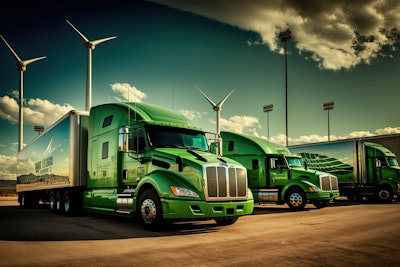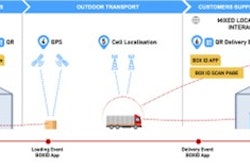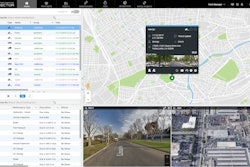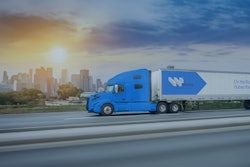
As the world moves faster and faster, it’s the companies who boldly innovate and explore ever-changing opportunities that end up successful while those who remain in the past struggle just to keep up. New technology allows for more efficient and optimized fleets than ever before. With trucking technology that can be implemented in ways unique to routes and cargo types, there are a million ways for companies to grow and innovate in a way that makes sense for the business.
One area of focus that many companies have chosen to prioritize is the research into and integration of alternative fuel vehicles (AFVs). Whether it’s fuel cost reduction, lower maintenance costs, or benefits from incentives and grants, this is one of the best places to start when looking at optimizing a fleet. Not only that, but it’s a great way for a company to act as a responsible environmental steward and demonstrate care for the future of the planet through decreased emissions.
By adopting technology such as AFVs now, before they may one day become a requirement, companies are allowing themselves the flexibility and time to gradually adapt their processes rather than be forced into rushing. For example, charging and maintenance capabilities for alternative fuel vehicles will both be different from traditional diesel or gasoline vehicles. When looking to future-proof, businesses have the option to meet these needs on their own timeline rather than hurry through strict deadlines and potentially make mistakes that damage their reputation or bottom line.
For companies aiming to optimize, it is most beneficial to dedicate AFVs to specified routes, as some vehicles are designed for short-haul routes with a 50-mile range.
Strategically assigning certain vehicles to certain routes is considered best practice when integrating AFVs into fleets. Electric trucks, for example, are most efficient and cost-effective in short-haul or regional delivery applications. It is often most convenient to return them to a central location every night for overnight charging, and to keep them within a 200-300 daily mileage. EVs are often assigned to last-mile deliveries that involve short distances and frequent stops, which benefits regenerative braking.
They’re also great for moving materials between warehouses or manufacturing plants in a dedicated plant-to-plant or yard-to-dock routing style.
Based on this, we can develop specific strategies to optimize EVs within fleets according to their strengths and avoiding their weaknesses. Within a company, identify which routes are short enough to return a vehicle to base every day, ideally around 250 miles or less. Invest in an energy management software that will help to maximize charging schedules by avoiding peak consumption hours.
Lastly, start small–introduce a couple of vehicles to your fleet and review their performance before expanding. This goes for all alternative fuel vehicles when first introducing them to a fleet.
Another option when looking to optimize a fleet via alternative fuel vehicles is the hydrogen fuel cell truck (HFCVs). Where EVs are best utilized in short-haul applications, HFVCs are capable of delivering on long-haul and heavy-duty applications. HFCVs can typically reach 600+ miles per fill and require less downtime, refilling in around 15 minutes before they’re back up and ready for the road.
Not only that, but hydrogen fuel cells are much lighter than EV batteries, meaning they have capacity for heavier payloads and are more prepared for heavy freight and industrial cargo. One of their only major challenges is the relatively scarce presence of hydrogen refueling stations. This is one aspect a company must investigate before investing in HFCVs: are there refueling stations on typical cargo routes? Are there any plans to add them in the near future?
Where EVs and HFCVs both have their ideal applications, so too do renewable diesel vehicles. Renewable diesel, a cleaner-burning alternative to traditional diesel, is derived from renewable resources such as vegetable oils, animal fats, and waste cooking oil.
The advantages of renewable diesel extend beyond environmental benefits. Unlike biodiesel, renewable diesel shares the same chemical composition as petroleum diesel, ensuring seamless integration into existing infrastructure and engines. Entire fleets can be transitioned to renewable diesel overnight with no downtime and no new trucks required. And luckily for longer haul trips with limited access to renewable diesel, trucks that are compatible with renewable diesel can still refuel with regular diesel without issue.
Overall, there is an option for every application when it comes to integration of alternative fuel vehicles into an existing fleet. Not only does it form a company into a better environmental steward, but the cost benefits often outweigh any initial investment. For those curious about adopting any of this technology, now is the time to look into which options would best fit the needs of specific routes and cargo. The future of logistics and fleet management continue to evolve, and successful companies will continue to evolve along with them.


















